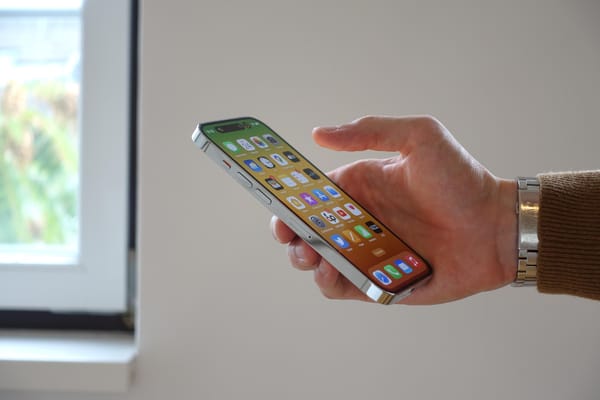Five Ways Your iPhone Can Be Hacked – And How to Prevent It

For years, iPhone owners have taken comfort in Apple’s reputation for security and privacy. iOS encrypts your data, blocks most malware, and updates regularly to patch vulnerabilities. Compared to many platforms, it’s one of the most secure consumer ecosystems in the world. But secure doesn’t mean immune — and recent events have shown that even iPhones can fall prey to targeted cyberattacks.
From journalists and activists to business executives and everyday consumers, attackers have found increasingly clever ways to compromise Apple devices. So far in 2025 alone, Apple has issued multiple emergency updates to fix critical zero-day flaws actively exploited in the wild. Some of these allowed “zero-click” attacks, which infect a device with spyware through a simple message — no tap or download required. Campaigns like Operation Triangulation and the long-running Pegasus spyware have proven that attackers don’t need physical access to steal your messages, photos, or location data.
And while not every iPhone owner is a spy-movie target, the line between sophisticated cyber espionage and ordinary criminal hacking keeps blurring. Scammers use the same psychological tricks and delivery methods — text messages, fake support calls, cloned websites — to dupe everyday users. The result? Your bank accounts, social media, and even cloud backups could be compromised, all through your phone.
The good news is you don’t need to be a cybersecurity expert to protect yourself. By combining basic best practices with a few proactive defenses, you can make your iPhone a much harder target for both hackers and con artists. This guide walks you through five real-world attack scenarios drawn from recent incidents and news reports and offers clear, actionable steps you can take today to stay safe.
1. Zero-click iMessage exploits — when you don’t even have to tap
Attack scenario:
One of the scariest classes of attack is the “zero-click” exploit: an attacker sends a specially crafted message (often via iMessage or another messaging mechanism) that triggers a vulnerability in the operating system and installs spyware — all without the user ever tapping or opening anything.
In 2025, Apple patched two actively exploited zero-day vulnerabilities in iOS (in CoreAudio and RPAC) that had been used in attacks targeting specific individuals. Over the years, Apple has warned users in 100+ countries that they may have been targeted by “mercenary spyware” or state-level actors.
Operation “Triangulation” is another high-profile example: researchers uncovered a chain of four zero-day exploits used to silently infect iOS devices (via iMessage) to steal messages, location data, audio, and more.
Defense advice:
- Keep your iOS always up to date. These exploits rely on unpatched system bugs, so Apple’s emergency patches are often the only defense.
- Enable Lockdown Mode (in Settings → Privacy & Security) if you believe you might be a target (e.g. journalist, activist, business executive). This mode locks down many functionalities leveraged in zero-click attacks.
- Minimize attack surface: disable services you don’t need (e.g. turn off mail fetch, limit message previews, disable certain attachments).
- Use a purpose-built mobile security tool. Bitdefender Mobile Security for iOS can detect suspicious behavior or malicious intent.
- Consider periodically rebooting your device: certain types of spyware do not survive reboots (though this is not a guaranteed defense).
2. Malware delivered via compromised apps, media, or drive-by download
Attack scenario:
A less exotic but more common vector is malicious or compromised apps, or media files (audio, video) that exploit bugs to escalate privileges or drop malware. In the 2025 zero-day cases, Apple noted that a malicious audio stream in a media file could trigger code execution on a device. In past years, Pegasus (NSO Group’s spyware) has used both iMessage attachments, crafted media files, or vulnerabilities in apps to infect iOS devices.
Defense advice:
- Only install apps from the official App Store; avoid sideloading and jailbreaking, which greatly increase risk).
- Before installing, check app reviews, permissions, and developer reputation.
- After installation, audit permissions periodically (location, microphone, camera) and revoke them when not needed.
- Use a third-party mobile security solution that can detect suspicious behavior or malicious code.
- Be careful when opening media files, especially those from unknown or suspicious sources.
3. SIM swap / SMS port-out / account takeover
Attack scenario:
Even if your phone’s software is hardened, attackers might target your mobile carrier account or phone number itself. In a SIM swap or port-out attack, attackers convince your mobile provider, often through trickery, to transfer your number to a SIM they control. They then receive SMS codes, reset your passwords, and take over your accounts. Carriers have been flagged frequently for weak identity checks.
In a news example, a salon owner in Australia had four iPhones fraudulently purchased under her account after attackers changed contact details and bypassed fraud checks.
Defense advice:
- Add a PIN, passcode, or extra authentication to your mobile account (carrier-level security).
- Ask your carrier for “port-out protection” or “SIM lock” so that changes require extra verification.
- Avoid relying solely on SMS-based two-factor authentication (2FA); instead, use app-based 2FA or hardware tokens
- Watch for warning signs: sudden loss of service, receiving texts about SIM changes you didn’t initiate.
- Lock or freeze your mobile account immediately if you suspect malicious activity.
4. Phishing / Smishing / platform-agnostic social engineering
Attack scenario:
Not all attacks require technical sophistication. A common vector is phishing or smishing (SMS-based phishing). Attackers impersonate banks, Apple, or services you trust, trick you into entering credentials, installing a malicious profile, or granting access.
iPhone users have recently been targeted with smishing campaigns that aim to steal Apple ID credentials. According to academic studies, a nontrivial fraction of users still fall for SMS bait messages.
This type of attack is platform-agnostic — it works across iPhone, Android, or even desktops, because it exploits human error rather than specific software bugs.
Defense advice:
- Never click links in unsolicited SMS, email, or messenger apps — especially if they ask for passwords, one-time codes, or want you to install something.
- Verify the sender: check for official domains and known email addresses, or call the institution independently.
- Use anti-phishing or security tools that can flag suspicious URLs.
- Learn how to watch out for red flags (urgent language, typos, mismatched domains).
- Where possible, use “passwordless” login options (e.g. push-based confirmation, device keys) rather than SMS codes.
5. Physical theft, extraction, or USB / cable exploit
Attack scenario:
A determined attacker with physical access to your iPhone might try to extract data via USB, cable exploits, or forensic tools. Some zero-day attacks have targeted the USB Restricted Mode (which is meant to lock down data access when the device is locked) to bypass encryption and extract data from a locked device. Earlier this year, Apple patched a zero-day exploit that could disable USB Restricted Mode on locked devices, which might have been used in sophisticated attacks.
Defense advice:
- Enable USB Restricted Mode (Settings → Face ID & Passcode → and set Accessories to Off) so that USB access is blocked when the phone is locked.
- Use a strong passcode or biometric lock — avoid weak four-digit PINs.
- Enable Erase Data (after e.g. 10 failed attempts) if you’re comfortable accepting the risk (you’ll lose the device’s data if someone tries too many times).
- Use Find My iPhone features: remote lock, locate, or erase your device if lost or stolen.
Summary & holistic advice
Here’s a synthesis of best practices across all five steps:
- Always update your iOS version & apps — many attacks rely on unpatched vulnerabilities.
- Use a trusted, independent security solution that monitors for malicious behavior in real time.
- Harden your accounts and SIM line, and avoid SMS-based 2FA where stronger alternatives exist.
- Be vigilant for phishing/social engineering, which is a powerful and universal threat.
- Lock down your physical device and restrict USB access to prevent extraction attacks.
Cybersecurity isn’t about paranoia, it’s about preparation. Even though the average person would rarely encounter sophisticated zero-click attacks or state-level spyware, the layering of these five defenses makes it much harder for attackers to succeed. Use this as a defense checklist to reference – and share it with others.
You may also want to read:
5 Sophisticated Scams Everyone Should Know About – And How to Spot Them
Beyond Free Antivirus: 5 Reasons Smart Consumers Choose Full-Strength Protection for Their Devices
tags
Author
Filip has 17 years of experience in technology journalism. In recent years, he has focused on cybersecurity in his role as a Security Analyst at Bitdefender.
View all postsRight now Top posts
Scammers Exploit Hype Around Starbucks Bearista Cup to Steal Data and Money, Bitdefender Antispam Lab Warns
November 18, 2025
Scam Alert: Fake Sephora Advent Calendar Ads and WhatsApp Messages Flood Europe in 2025
November 17, 2025
ClickFix Malware Chain Expands: Fake TradingView and Sora 2 Ads On Meta Now Target macOS Users
November 17, 2025
Online Safety Challenge: A Week of Cyber Tasks for Families
October 27, 2025
FOLLOW US ON SOCIAL MEDIA
You might also like
Bookmarks






